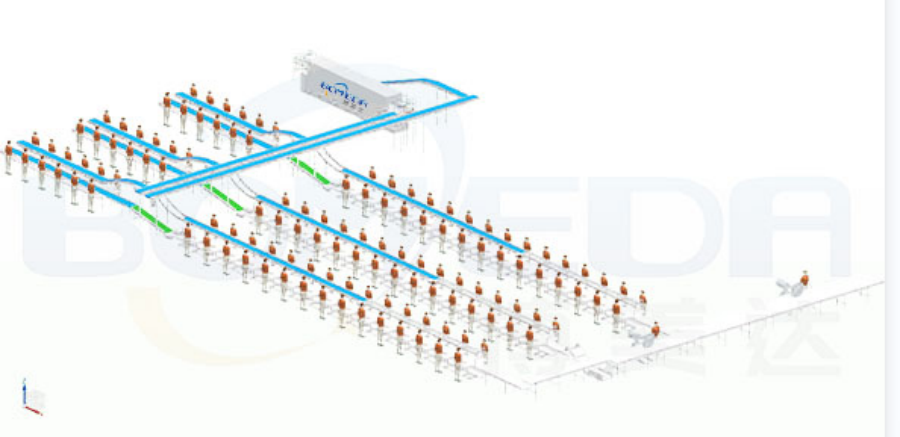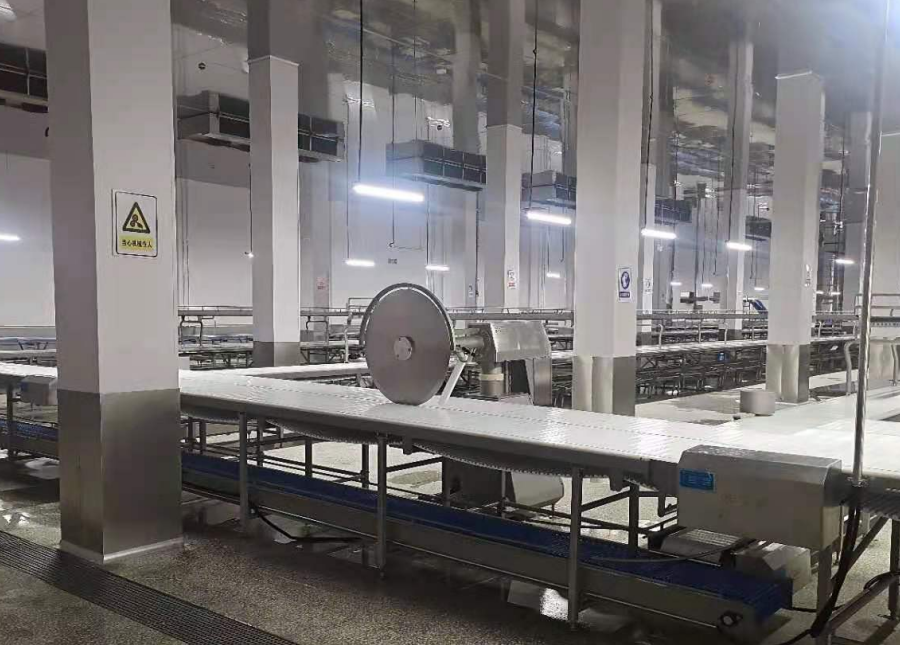The white strips are roughly divided into: front legs (front section), middle section, and hind legs (rear section).
Forelegs (front section)
Place the white strips of meat neatly on the meat table, use a machete to cut off the fifth rib from the front, and then use a boning knife to neatly slice down the seam of the ribs. Accuracy and neatness are required.
Midsection, hind legs (rear section)
Use a machete to cut open the second joint between the tailbone and the backbone. Pay attention to the knife being accurate and powerful. Cut off a piece of meat where the pork belly is connected to the surface of the rear hip tip with a knife, so that it is connected to the pork belly. Use the tip of the knife to cut along the edge of the knife to separate the tailbone, back tip and the whole piece of white pork.
I.Segmentation of front legs:
The front leg refers to the fifth rib from the tibia, which can be divided into skin-on front leg meat, front row, leg bone, nape, tendon meat and elbow.
Division method and placement requirements:
Cut into small pieces, with the skin facing down and the lean meat facing out, and place vertically.
1. Remove the front row first.
2. With the blade upward and the back of the knife facing inward, first press the right button and move the knife along the bone toward the plate, and then press the left button and move the knife along the bone toward the plate.
3. At the junction of the plate bone and the leg bone, use the tip of the knife to lift up a layer of film, and then use the thumbs of your left and right hands to push it forward until it reaches the edge of the plate bone.
4. Lift the leg bone with your left hand, use the knife in your right hand to draw downward along the leg bone. Use the tip of the knife to lift up a layer of film at the interface between the leg bone and the plate bone, and draw downward with the tip of the knife. Pick up the leg bone with your left hand, press the meat above the bone with your right hand and pull down hard.
Notes:
①Clearly understand the position of bones.
② Cut the knife accurately and use the knife rationally.
③Appropriate amount of meat is enough on the bones.
II. Middle segmentation:
The middle section can be divided into pork belly, ribs, keel, No. 3 (Tenderloin) and No. 5 (Small Tenderloin).
Division method and placement requirements:
The skin is down and the lean meat is placed vertically outward, showing the layered texture of the pork belly, making customers more interested in buying.
Separation of bones and flowers:
1. Use the tip of a knife to lightly slit the joint between the lower root of the ribs and the pork belly. It should not be too deep.
2. Turn your wrist outwards, tilt the knife, and move it inward along the cutting direction to separate the bones from the meat, so that the bones of the ribs are not exposed and the five flowers are not exposed.
Separation of pork belly and ribs:
1. Cut the part connecting the five-flowered edge and the ridge to separate the two parts;
2. Use a knife to cut open the connection between the bottom of the spine and the fat waist, and then cut the pork belly into long strips lengthwise along the ribs.
Notes:
If the pork belly fat is thick (about one centimeter or more), the milk residue and excess fat should be removed.
III. Hind leg segmentation:
Hind legs can be divided into skinless hind leg meat, No. 4 (hind leg meat), monk head, leg bone, clavicle, tailbone, and hind elbow.
Division method and placement requirements:
Cut the meat into small pieces and place the skin vertically with the lean meat facing outwards.
1. Cut from the tailbone.
2. Cut the knife from the tailbone to the left button, then move the knife from the right button to the junction of the leg bone and the clavicle.
3. From the junction of the tailbone and the clavicle, insert the knife at an angle into the bone seam, forcefully open the gap, and then use the tip of the knife to cut off the meat from the tailbone.
4. Use the index finger of your left hand to clasp the small hole on the clavicle, and use the knife in your right hand to cut off the film at the interface between the clavicle and the leg bone. Insert the blade of the knife into the middle of the clavicle and draw it inward, then lift the edge of the clavicle with your left hand and draw downward with the knife.
5. Lift the leg bone with your left hand and use the knife to draw downward along the leg bone.
Notes:
① Fully understand the direction of bone growth and be aware of it.
②The cutting is accurate, quick and clean, without any sloppiness.
③There is meat on the bones, just the right amount.
Post time: Jan-12-2024


